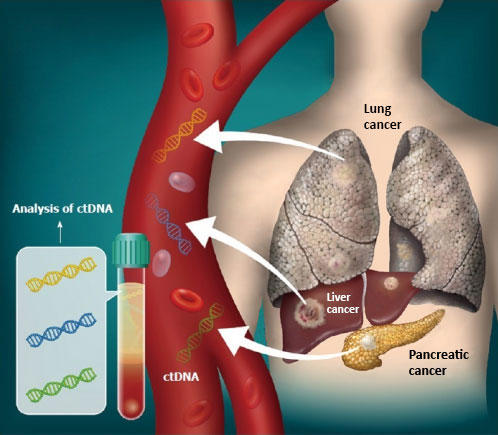Glioblastoma (GBM), the most aggressive primary brain tumor, continues to portend a poor prognosis with median survival under two years, despite standard care involving surgery, radiation, and temozolomide chemotherapy. The remarkable success of chimeric antigen receptor T-cell (CAR-T) therapy in blood cancers has not yet translated to GBM, primarily due to the tumor's unique defenses. This review methodically analyzes the two fundamental challenges—antigenic heterogeneity and an immunosuppressive tumor microenvironment (TME)—and synthesizes the cutting-edge strategies being engineered to breach these barriers, signaling a shift from direct tumor killing to comprehensive immune system reprogramming.
The Dual Fortresses: Core Challenges in GBM CAR-T Therapy
The efficacy of CAR-T cells in GBM is thwarted by two formidable and interconnected obstacles.
Antigenic Heterogeneity: GBM tumors are not uniform; they are a mosaic of evolving cell populations. Target antigens like EGFRvIII are often expressed only in a subset of tumor cells and can be completely lost after initial CAR-T treatment, allowing antigen-negative clones to drive recurrence. This problem is compounded by glioma stem cells (GSCs), a resilient subpopulation responsible for treatment resistance and relapse. GSCs exhibit distinct surface markers (e.g., CD133, CD44) and can actively suppress antigen presentation, making them invisible to single-target CAR-T approaches.
The Immunosuppressive Tumor Microenvironment (TME): The GBM TME is a fortified sanctuary for the tumor. Physically, the blood-brain barrier (BBB) and blood-tumor barrier (BTB) significantly limit the trafficking of systemically administered CAR-T cells into the tumor bed. Biologically, the TME is a hub of immunosuppression, populated by tumor-associated macrophages (GAMs) that secrete inhibitory cytokines (IL-10, TGF-β), and regulatory T cells (Tregs) that dampen immune attacks. Key pathways like PD-1/PD-L1 induce CAR-T cell exhaustion, while metabolic waste products like lactate and adenosine further paralyze anti-tumor immunity.
Breaching the Walls: A New Generation of CAR-T Strategies
To overcome these challenges, the field is moving beyond first-generation CAR-T designs toward a suite of sophisticated, multi-pronged strategies.
Next-Generation CAR-T Engineering for Precision and Adaptability:
Multi-Target and Logic-Gated CARs: To prevent antigen escape, researchers have developed tandem CARs that can simultaneously recognize two antigens, such as CD44 and CD133. More advanced still are logic-gated CARs, which operate on computational principles. For instance, an "AND" gate CAR requires the presence of two tumor antigens to activate, drastically improving specificity and sparing healthy tissue. An "IF-THEN" gate (e.g., SynNotch) can conditionally induce the expression of a second CAR, enabling sophisticated sensing and response circuits within the TME.
Switchable and Universal CARs (UniCARs): This modular platform decouples the targeting element from the T-cell signaling machinery. Clinicians can then redirect a single, universal CAR-T cell product to different tumor antigens by administering soluble adaptor molecules, offering an unprecedented ability to dynamically counter antigen loss.
Broad-Spectrum Recognition: NKG2D-CAR-T cells leverage a natural immune receptor that recognizes a family of stress-induced ligands (e.g., MICA, MICB) commonly upregulated on diverse tumor cells, providing a built-in mechanism to tackle heterogeneous tumors.
Combination Therapies to Dismantle the Suppressive TME:
Immune Checkpoint Blockade: Combining CAR-T therapy with PD-1/PD-L1 inhibitors can rescue exhausted T cells. Genetically engineering CAR-T cells to lack PD-1 or to express a PD-1-dominated receptor has shown enhanced potency in preclinical GBM models.
Cytokine Armoring: Engineering CAR-T cells to secrete or respond to supportive cytokines like IL-7, IL-15, or IL-21 significantly enhances their expansion, persistence, and stem-like memory within the nutrient-poor and hostile TME.
Synergy with Established Modalities: The standard chemotherapeutic agent Temozolomide (TMZ) can be leveraged to create a more favorable environment for CAR-T cells by depleting Tregs. Similarly, local radiotherapy induces immunogenic cell death, releasing tumor antigens and damage signals that can potently activate and enhance the function of co-administered CAR-T cells.
Enhanced Delivery and Preclinical Modeling:
Local Delivery: To bypass the BBB, routes such as intratumoral or intraventricular infusion are being actively explored, leading to higher local concentrations of CAR-T cells and reduced systemic toxicity.
Cutting-Edge Preclinical Tools: The use of patient-derived glioblastoma organoids (GBOs) provides a high-fidelity model that recapitulates the tumor's heterogeneity and complex TME, enabling robust testing of CAR-T efficacy. Furthermore, single-cell RNA sequencing offers a granular view of the tumor ecosystem, revealing unique antigen combinations on different cell subpopulations and exhaustion markers on T cells, thereby guiding the rational design of personalized, multi-target CAR-T strategies.
Conclusion
The path forward for CAR-T therapy in GBM is one of integration and sophistication. The era of single-target approaches is giving way to a new paradigm that combines smart, adaptable CAR designs with TME-modulating combination therapies. By leveraging advanced delivery methods and powerful preclinical models, the next generation of treatments will aim not just to kill tumor cells, but to fundamentally reshape the immunosuppressive landscape of glioblastoma, turning a fortified fortress into a vulnerable target. This holistic approach is essential for achieving a long-awaited breakthrough in the treatment of this devastating disease.
Full text
http://xiahepublishing.com/2996-3427/OnA-2025-00014
The study was recently published in the Oncology Advances .
Oncology Advances is dedicated to improving the diagnosis and treatment of human malignancies, advancing the understanding of molecular mechanisms underlying oncogenesis, and promoting translation from bench to bedside of oncological sciences. The aim of Oncology Advances is to publish peer-reviewed, high-quality articles in all aspects of translational and clinical studies on human cancers, as well as cutting-edge preclinical and clinical research of novel cancer therapies.






